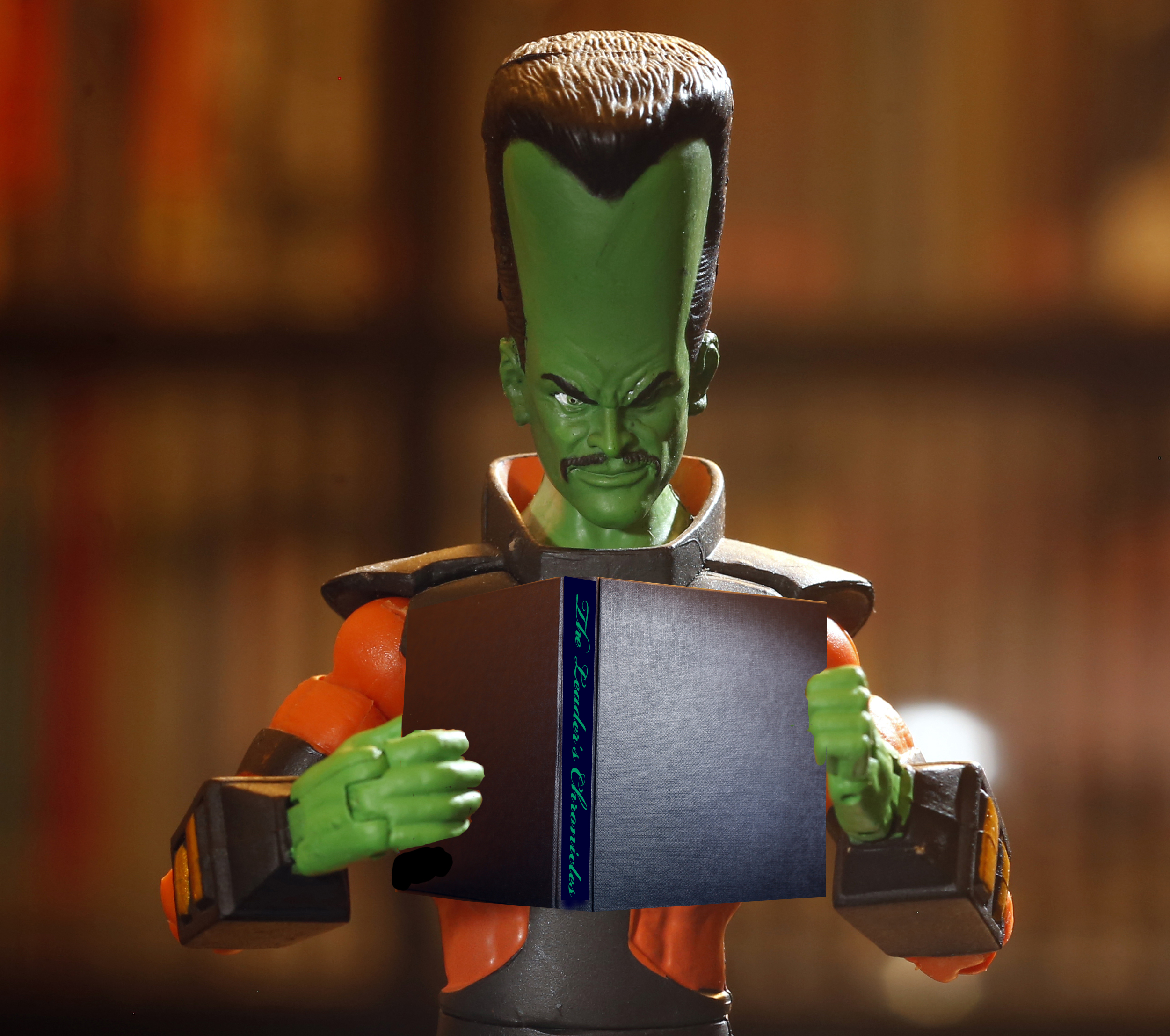|
| |
|
| Ditko's art from 1959 is one of the high points of his career. It was better than the art he was doing in 1961 - 1963. His 1959 art had more detail and is also marked by imaginative, unconventional panel arrangements on the page. His later early 1960s panel arrangements fell into the more commonly used routine pattern of the panels lined up in rows with little or no overlapping or inset panels. These 1959 and some 1960 stories don't appear to be written by Stan Lee. The writing doesn't seem to match Lee's style. These unsung pre-Marvel writers (Hank Chapman, Carl Wessler et al) were capable writers and gave these early Ditko stories an interesting flavor different from the later Lee / Ditko collaborations. From Strange Worlds #2, 1959. |
|
|
|
|
| "The Man With The Atomic Brain" |
|
| The effects of atomic radiation on humans, giving them extra powers or turning them into freaks, was a popular theme with science fiction and comic book writers in these Cold War years. The EC sci-fi comics did a lot of "atomic mutant" type stories. Ditko's art here shows the more conventional panel arrangements he mostly used in his 1960s stories. Again, the writing here probably isn't Stan Lee. From Journey Into Mystery #52, 1959. |
|
|
|
|
| "I Journeyed Back To The 20th Century" |
|
| Fantastic Ditko splash page of a time machine materializing over a city street. With an intro page like this how could you not want to read the story? This is one of the best Ditko stories among all the pre-Marvels. Check the panels in the story showing the time traveler from the future walking among the 20th Century primitives and using his force field to keep them at bay! 1959 style unconventional panel arrangements. Again, probably not written by Stan Lee. From Tales To Astonish #3, 1959. |
|
|
|
|
| "I Shrank Away Into Nothing" |
|
| Typical example of the frequently used Size Relativity plot a.k.a. worlds-within-worlds. This idea isn't used a lot in literary science fiction but the comic book companies used it, probably Marvel more than EC and DC. The Lee / Ditko plots usually had the twist ending where the guy being shrunk down arrives on Earth, meaning we Earth folks are just microscopic specks in somebody else's universe. From Journey Into Mystery #56, 1960. |
|
|
|
| |
|
| This is one of the best of all the pre-Marvel stories and one of my personal favorites! The stories that didn't fit the usual formula plots were usually among the best. The plot here is a guy is trying to figure out why Earthmen can't leave the Solar System. There is some mysterious barrier holding them in. The fishbowl analogy in the last panel is brilliant. This type of plot could have been used by any big name science fiction writer, and I assume it was somewhere. The writing style doesn't seem to match Stan Lee; hats off to another unsung pre-Marvel writer. From Tales To Astonish #9, 1960. |
|
|
|
|
| "I Know The Secret Of The Flying Saucer" |
|
| The plot device of machines or other apparently inanimate objects being intelligent creatures was a fairly common pre-Marvel plot. This story is unusual however because it is a remake of the story with the same title from Strange Worlds #1, 1958 with Jack Kirby art. Comic book art dealer Conrad Eschenberg showed me the original art to this entire story at a comic convention in Philadelphia many years ago. I wouldn't be surprised at all if he still has it. From Tales Of Suspense #11, 1960. |
|
|
|
|
| "I Must Find Those Who Lurk Below" |
|
| This story is a sentimental favorite of mine. I first read it in reprint comic Fantasy Masterpieces #1, 1966 I bought new from Mr. Woo's 7-11 store. Ditko could draw sadistic prison guards and emaciated, wretched prisoners better than anybody. This is a typical comeuppance plot where the bad guy gets his just punishment. Comic artist Mike Thibodeaux owned the original art to this story in the 1980s and told me over the telephone he was going to take it to his grave. From Tales Of Suspense #12, 1960. |
|
|
|
| |
|
| In the 1950s and 1960s Cold War some people had fallout shelters and were used in stories in TV shows, books and comic books. Here's one example of a fallout shelter from Marvel. I like the panels shown here of the guy relaxing and killing time in his shelter. This is a typical Lee / Ditko selfish bad guy so naturally he gets his comeuppance in the end. From Amazing Adult Fantasy #7, 1961. |
|
|
|
| |
|
| Jack Kirby was the king of the pre-Marvel big monsters but Ditko could draw his own version of big monsters too. Sometimes, Ditko's aliens and monsters looked humorous or goofy, but he drew scary, menacing monsters like this as well. The twist ending to this story shows the humans are really robots and what look like the robots turn out to be intelligent creatures in charge of the robots. Stories where aliens, robots and men aren't what they seem is a common pre-Marvel plot device. From Journey Into Mystery #65, 1961. |
|
|
|
| |
|
| Another Size Relativity plot. Yes, the shrinking guy ends up on Earth again as usual. From Strange Tales #82, 1961. |
|
|
|
|
| "The Thing Behind The Wall" |
|
| Another creepy Ditko monster. This one is smiling a little. Jack Kirby monsters didn't usually smile. From Journey Into Mystery #66, 1961. |
|
|
|
| |
|
| Another variation on the Size Relativity plot. The space ships in the last panel aren't taking off from a planet, but a baseball glove and the white sphere hurtling toward them isn't a rogue asteroid or planet but a baseball from the planet Earth. The last panel is another fine example of Ditko's eye-catching use of composition. From Journey Into Mystery #72, 1961. |
|
|
|
|
| "The Anatomy Of A Nightmare" |
|
| It's pure hell to try to get a good night's sleep in a Steve Ditko story! This is one of the famous Ditko stories because of the spectacular art. The plot isn't original, but another of those "people aren't what they seem to be" plots. This story would have made a fine Twilight Zone TV episode except the budget couldn't accommodate flying dragons and Ditkoesque alien landscapes. The closest Twilight Zone could come was the episode "Eye Of The Beholder." From Tales Of Suspense #22, 1961. |
|
|
|
|
| "The Creature From The Black Bog" |
|
| Ditko sometimes drew his aliens and monsters with puckered lips, like they had been sucking too many lemons. This giant alien's puckered lips make him look a little goofy instead of menacing, appropriate since he is a friendly alien who rewards the old couple for helping him out. The ugly but friendly alien who is driven away by ignorant Earthmen or who need help from Earthmen was a frequently used pre-Marvel plot. From Tales Of Suspense #23, 1961. |
|
|
|
| |
|
| This is another personal favorite of mine and one of the better pre-Marvel stories because it falls outside the usual formula plots. The plot isn't totally original however. It involves a man and woman who turn out to be Adam & Eve. That plot was used fairly often in literary science fiction and other comic books, but Marvel didn't use it too the point of exhaustion like their other plots. This story has unique panel layouts. It is the only pre-Marvel story that has eight panels per page after the splash page exactly like you see here. The story holds your attention as you watch the main character alienated from humanity as he waits for a 1,000 year youth serum he drank to wear off. Note the characteristic Stan Lee humor in the last panel. From Strange Tales #90, 1961. |
|
|


